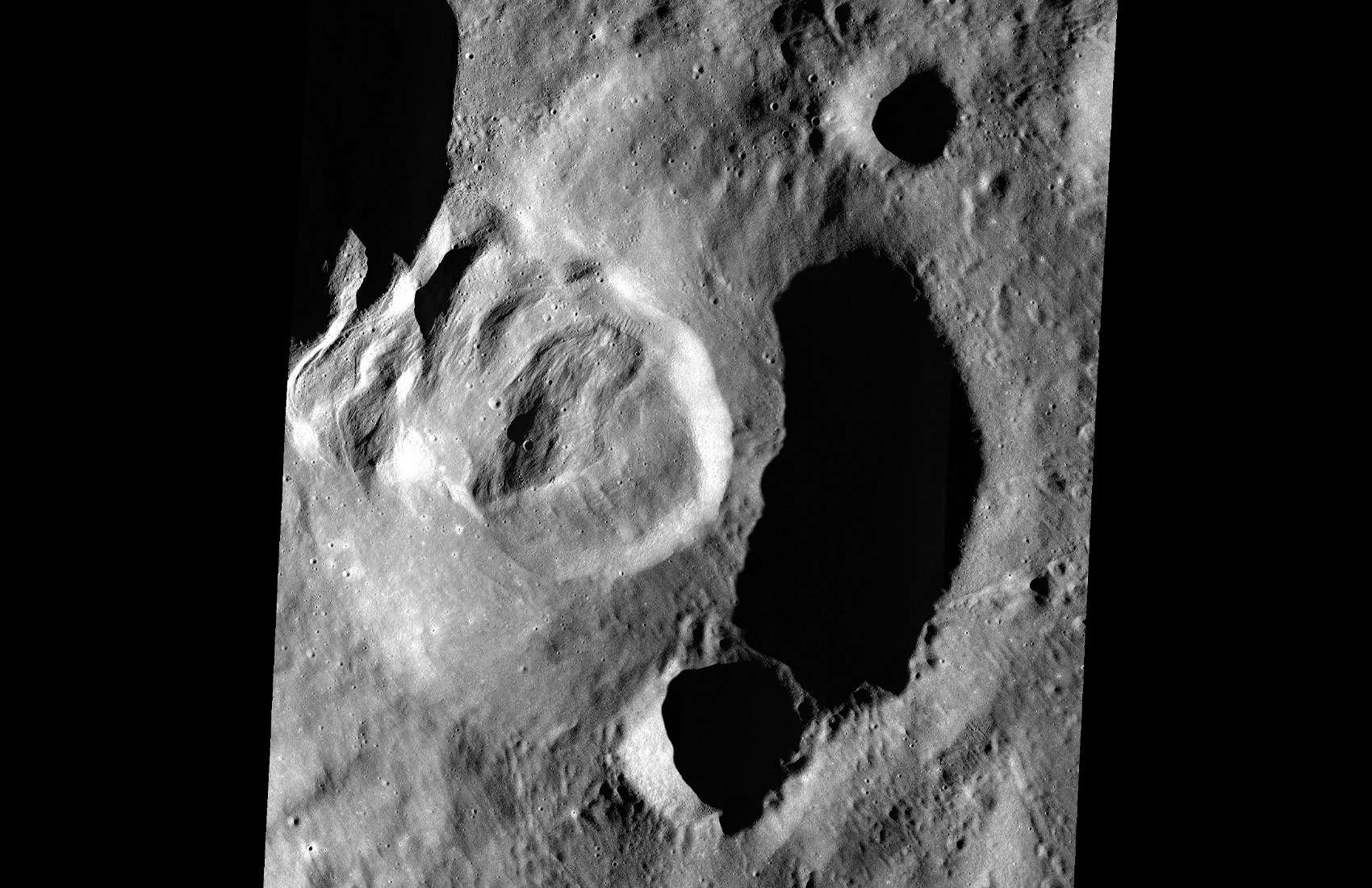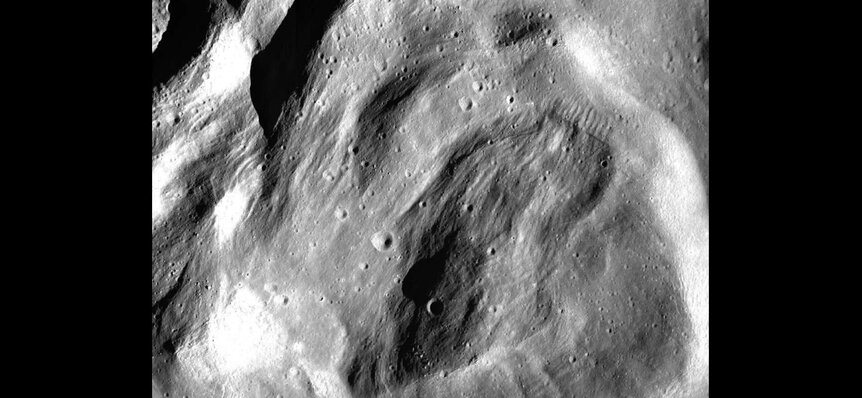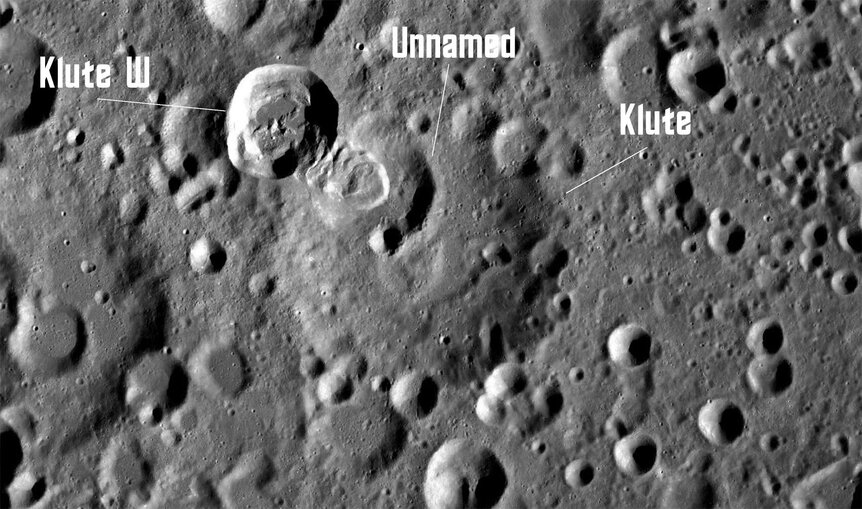Create a free profile to get unlimited access to exclusive videos, sweepstakes, and more!
Landslides on the Moon? Get a Klute.

On the Moon's far side — the hemisphere forever hidden to prying eyes on Earth — lies a crater named Klute (after an engineer who was part of the team that developed the Saturn V rocket engines). Klute is old, terribly old; it's 75 kilometers wide and extremely degraded, eroded by billions of years of subsequent impacts around it, as well as the gradual effect of the solar wind and micrometeorite impacts.
To its immediate northwest is a much fresher crater about 28 km wide, called Klute W. We can tell it's younger because the rim is sharp and uneroded, and it has far fewer smaller craters in it — there's been less time for them to accumulate.
Although it's not certain, it looks like the impact that formed Klute W has an effect on the area around it: It may have triggered a massive landslide in crater right next to it!
This image is from the terrific Lunar Reconnaissance Orbiter, which has been mapping the Moon in high resolution since it attained orbit in 2009. The fresh crater is in shadow to the upper left, and the 30-km wide crater you see centered is unnamed. That huge elongated blob to the upper left inside the crater is what's called a mass wasting event, where material moves from one spot to another due to gravity. In this specific case it's a landslide, and a huge one: The tongue of material is 18 km long and 14 km wide. Put another way, Washington DC would be completely buried under such a landslide.
The age of the slide, as far as I can tell, is uncertain, but it's been long enough to accumulate smaller craters on the top of the pile. It's entirely possible this happened before the impact of Klute W, but to my untrained eye (when it comes to lunar geomorphology) it's hard to tell. There's some slumping in Klute W to the northwest as well, and in fact all around Klute W you can see spots where material has slid down from the crater wall to the floor. Craters can grow in diameter that way, so perhaps Klute W started out a bit smaller and didn't intersect the unnamed crater as much as it does now.
Lunar geologic timelines can be tricky. In fact, there are probably fewer small craters in the big landslide than you'd expect, since as material moves more it would erase craters. This mass wasting may have happened a very long time ago.
You can see linear striations in the material perpendicular to the direction of motion, likely folds in the material as (or after) it settled to a stop, and material upslope pushed down on it, causing it to ripple.
The folks behind the LRO Camera that made these images have assembled an incredible interactive atlas of the Moon based on LROC images. If you go to the landslide in the atlas, you can zoom in and in and IN to see ever-smaller craters in the landslide, some just a few meters across. I noticed most craters in the landslide itself tend to have a softer look, and that must be due to the loose, friable nature of the material in the slide. It's not as compacted and solid like the terrain around it.
You can also see boulders sticking up (the trick is to look for shadows that go the opposite direction of crater shadows), too. I looked for tracks and linear dimples that might reveal where boulders rolled/skipped down the surface, but didn't spot any. Maybe you'll have better luck.
By the way, if you look to the upper left of the atlas you'll see a magnifying glass icon; if you want to have an episode of existential dread click it to measure sizes of objects in the atlas and also get a depth profile (generated using elevations from LOLA, the Lunar Orbiter Laser Altimeter). Poke around a bit, get some sizes and distances of things...
… and then imagine what it must have been like to stand there and witness this slide.
What a thing to see! Billions of tons of lunar rock and regolith thundering down the slope of the unnamed crater wall — soundless in the airless environment but the intense vibrations from the event shaking the ground immensely as it's transmitted through the surface — boulders bouncing high in the 1/6th Earth gravity, dust flying up and then immediately down with no air to allow it to billow, until finally the slide came to a slow halt at the crater bottom.
Now that I've imagined it in my head, I think I'd prefer to see something like that from orbit, and not the surface. Events this huge must be millions of years between occurrences, but I still hope against hope it could happen while we have such amazing eyes on the Moon like LRO. The science garnered from it would be enormous, and it would remind people of just how astonishing and awe-inspiring our Moon is.





























